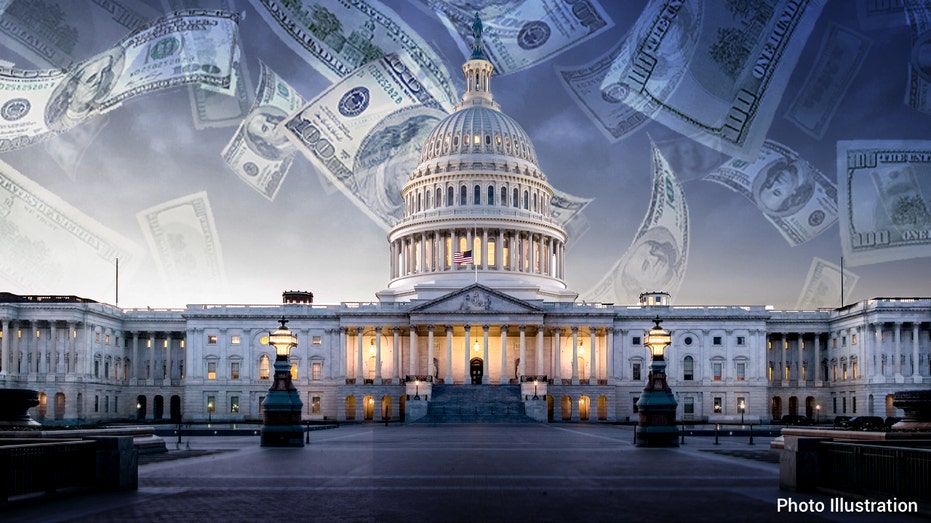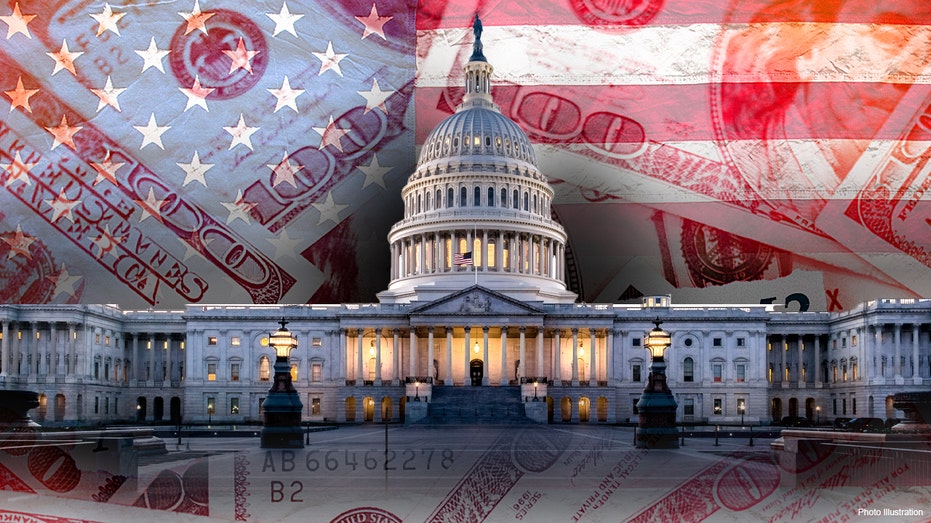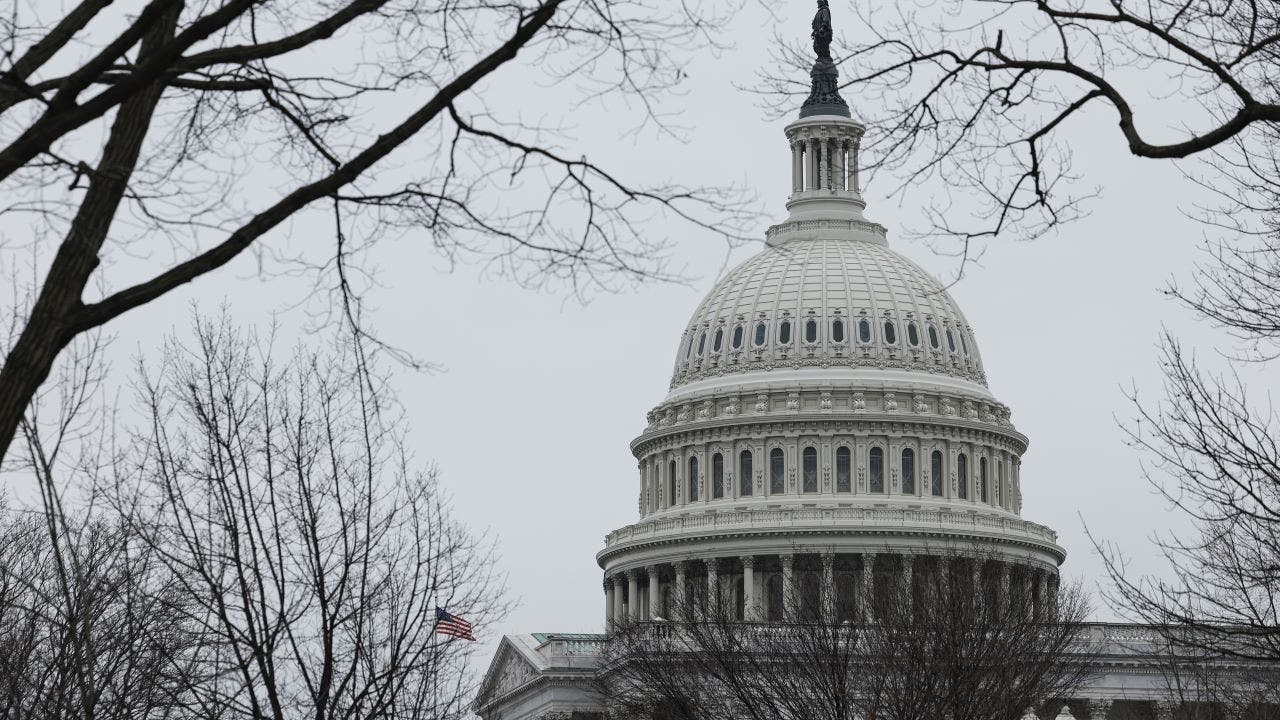The nonpartisan Congressional Budget Office (CBO) on Wednesday released its budget and economic outlook for the 2024 to 2034 period, which showed the national debt will soon surpass the size of the U.S. economy and surpass a historical record in four years.
The CBO projected that the debt held by the public – a key metric for tracking the size of the national debt used by economists – totaled $26.2 trillion in 2023 and is set to rise to $27.9 trillion in 2024. Over the next decade, it is projected to rise to $48.3 trillion in 2034.
As a percentage of gross domestic product (GDP), or as compared to the size of the U.S. economy, debt held by the public is projected to reach 99% of GDP in 2024 and will continue to rise over the next 10 years before hitting 116% of GDP in 2034. In effect, this means that the national debt will roughly equal the size of the U.S. economy this year per the CBO’s projections – and its growth relative to America’s economic output is expected to continue.
“Debt held by the public rises each year in relation to the size of the economy, reaching 116 percent of GDP in 2034 – an amount greater than at any point in the nation’s history,” the CBO wrote.
CBO REPORT SAYS US DEFICIT TO SKYROCKET IN NEXT DECADE
The country’s current record for the highest public debt as a percentage of GDP is 106% in 1946, when the U.S. began the process of demobilizing after the conclusion of World War II, according to data from the Federal Reserve and the Office of Management and Budget. That threshold would be surpassed in 2028 under the CBO’s projections.
The gross national debt, which consists of both the debt held by the public and Treasury securities held by government accounts like the Social Security trust funds, does not directly affect the economy and has no net effect on the federal budget.
However, it serves as a frame of reference for the public in monitoring the size of the national debt and the government’s fiscal health and is projected to rise by about $21.4 trillion over the next decade from $34.8 trillion in 2024 to $54.9 trillion in 2034.
US NATIONAL DEBT TRACKER FOR FEB. 7, 2024: SEE WHAT AMERICAN TAXPAYERS (YOU) OWE IN REAL TIME

The CBO explained that much of the growth in the national debt over the next decade will be driven by increasing mandatory spending on entitlement programs like Social Security and Medicare, as well as the cost of servicing the national debt through interest payments.
“From 2024 to 2034, increases in mandatory spending and interest costs outpace declines in discretionary spending and growth in revenues and the economy, driving up debt,” the CBO wrote. That trend persists beyond the 10-year budget window, and the CBO projects it will push federal debt held by the public to 172% of GDP in 2054.
“Net interest costs are a major contributor to the deficit, and their growth is equal to about three-quarters of the increase in the deficit from 2024 to 2034,” CBO Director Phillip Swagel wrote in a statement accompanying the report.
HOW MUCH DEBT IS TOO MUCH DEBT?

He noted that interest costs are currently about the size of the federal discretionary budgets for defense and nondefense programs that are subject to approval by Congress each year and wrote, “Initially, net interest costs are similar to the amounts of discretionary spending both for defense and for nondefense activities. By the end of the period, they are roughly one and a half times larger than each, at $1.6 trillion.”
“Also boosting deficits are two underlying trends: the aging of the population, and growth in federal health care costs per beneficiary. Those trends put upward pressure on mandatory spending,” Swagel added.

Mandatory spending programs are projected to total $3.9 trillion in 2024 – more than double the estimated $1.7 trillion in discretionary spending and well over half of the $6.5 trillion in total federal spending. By 2034, the CBO estimates mandatory spending will be about $6.3 trillion.
Of the major mandatory spending programs, Medicare spending is projected to rise from $1.1 trillion in 2024 to about $2.2 trillion in 2034, Social Security spending is projected to grow from roughly $1.5 trillion to about $2.5 trillion in that period.
Maya MacGuineas, president of the nonpartisan Committee for a Responsible Federal Budget, wrote in a statement that policymakers have put the nation in this fiscal position through years of pursuing their preferred spending and tax policies without addressing major drivers of the deficit.
“It’s hardly a surprise that we’re in this predicament. For years, policymakers have relentlessly added to the national credit card – sometimes with good justification, like during COVID, but other times to avoid the hard choices necessary to offset desired spending increases and tax cuts. And all the while, they’ve ignored the rapid automatic growth of our major health and retirement programs,” she wrote.













